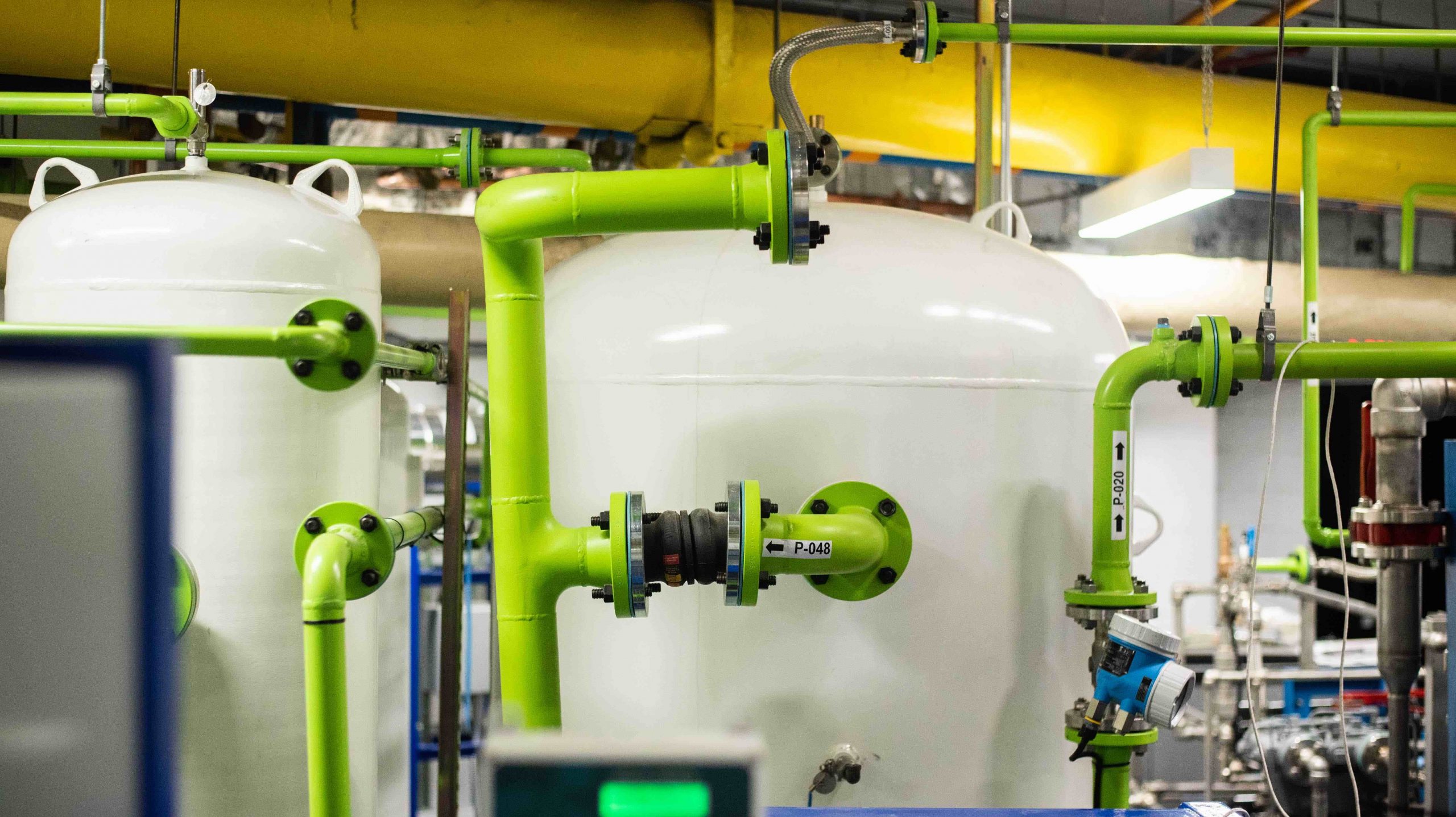Big Apple buildings feed CO2 for CarbonCure masonry mineralization
Sources: Glenwood Management, CarbonQuest, New York City; CMCM staff
Brooklyn-based Glenwood Mason Supply will source “Sustainable CO,” processed from New York City apartment building mechanical flue exhaust, for concrete masonry unit (CMU) production augmented by CarbonCure carbon dioxide mineralizing technology. After a 2022 pilot installation at The Grand Tier (1930 Broadway), Glenwood Management (unaffiliated with the producer) plans Q1 deployment of modular CarbonQuest Building Carbon Capture Systems at five additional Manhattan towers. In urban setting terms, the firm is poised to harbor the first large-scale installation of equipment capturing CO2 from buildings prior to emitting into the atmosphere.

Building Carbon Capture System installations will be coupled with use of CarbonQuest software to track greenhouse gas capture and delivery to users like Glenwood Mason Supply. Along with providing real-time data and analytics, the Carbon Management Software platform will also verify, measure and report CO2 emissions to third party verifiers, auditors, and regulators.
CarbonQuest engineers collection, separation and storage assemblies to isolate, purify and liquify CO2 from commercial building mechanicals. Stored in high pressure, portable tanks, the compound is then transferred to Glenwood Supply or other prospective “off takers.” Like other concrete producer partners of Nova Scotia-based CarbonCure Technologies, Glenwood Supply injects CO2 in fresh mixes, where the compound mineralizes for permanent sequestration and contributes to compressive strength development and other engineering properties. At normal dosing, the injection and mineralization process consumes 1.1 lbs. or 0.5 kg of CO2 in 30 standard (8- x 16-in.) CMU.
“Federal and city legislation are incentivizing technology that can drive emissions reduction at a building level,” says Glenwood Management Senior Vice President Josh London. “With the success of our first CarbonQuest system, we are excited to roll out the technology to more of our portfolio, leveraging carbon capture alongside other technologies to reduce our emissions and gain compliance with local regulations.”
CarbonQuest’s systems position the property manager to prevent thousands of tons of building CO2 emissions annually. The Building Carbon Capture System is particularly timely in light of New York City Local Law 97, which in 2024 will begin to penalize commercial properties based on their CO2 emissions. Factoring current carbon emissions metrics, the Glenwood Management properties would incur roughly $7 million in penalties through 2029, followed by $15 million from 2030 to 2034. The CarbonQuest installations stand to eliminate them entirely.
“CarbonQuest is the only cost-effective, nondisruptive solution offering an immediate pathway to meaningful building decarbonization, and we view this expanded partnership with Glenwood Management as a testament to the instant value realized through our pilot project,” observes CarbonQuest Chief Operating Officer Brian Asparro. “With New York City’s building emission penalties set to go into effect next year, property owners are looking for innovative ways to decarbonize. And while improving energy efficiency is part of the equation, capturing carbon before it is emitted is also a critical part of the path to decarbonization.”
Beyond its potential to deliver building owners significant value, he adds, the CarbonQuest system holds potential to dramatically increase global “point-source” carbon capture capacity. Point-source devices have traditionally been used exclusively at power plants or other large industrial facilities that benefit from an abundance of space, absence of tenant activity, and often, significant capital to dedicate to energy and carbon reduction. CarbonQuest is elevating the building decarbonization landscape, fostering opportunities for emissions reduction from property owners of any sizable commercial, residential or institutional building, thereby dramatically expanding the potential environmental impact of the technology.